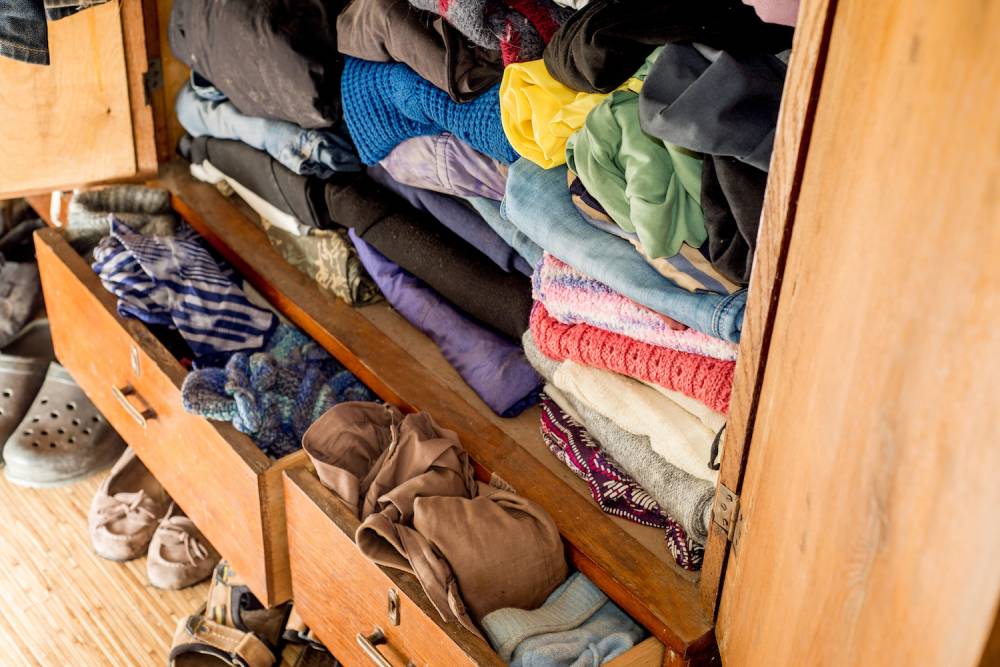Living more simply is becoming a popular trend. People are realising that they don’t need all of the stuff that they have accumulated over the years. In this blog post, we will discuss how to de-clutter your home and live a simpler life. We will talk about what to give to charity, what to recycle and what to have a clearance company take away. Follow these simple tips and you will be on your way to living a more stress-free life!
Why De-Clutter?
We have become a nation of hoarders, take a look inside most homes in the UK and you will see an accumulation of ‘stuff’, much of which isn’t needed or used. For some people, having clutter around them can create a feeling of overwhelm and can affect their mood in a negative way.
So what are the benefits to de-cluttering?
De-cluttering can help to:
* reduce stress levels
* improve sleep patterns
* increase productivity
* create a sense of calmness and peace
If you’re feeling like your home is full of clutter and you don’t know where to start, then why not try these tips:
- Set yourself a goal – decide on an area that you want to declutter first. Having a specific goal in mind will make the process feel less daunting.
- Schedule some time – set aside some time each week to declutter. Even if it’s just 30 minutes, this will make a difference.
- Be ruthless – get rid of anything that you don’t use or need. If it’s taking up space and isn’t serving a purpose, then get rid of it!
- Create zones – designate different areas for different items such as ‘books’, ‘papers’ etc. This will help to keep things organised and make the de-cluttering process easier.
- Take your time – don’t try to do too much at once. Tackle one area at a time and take your time to go through each item. You’ll be surprised at how much lighter you feel when you’re finished!
What do I do Next?

When it comes to de-cluttering, there are no rules – just do what feels right for you and your home. By following these tips, you can create a calmer, more organised space that you’ll enjoy living in. And who knows, it might even inspire you to start de-cluttering other areas of your life too!
What do I do with all that stuff?
After you have divided your belongings into different zones, it is time to go through each one and decide what to do with the items. Split down further into donations charity, things you can sell and junk that you no longer want, sort through each zone and split the items into these categories.
Then set aside time to deal with each one. Take the charity items to a shop first and book a waste clearance company to come and collect the things you can’t sell or donate. These two things are the quickest and easiest to organise and once dealt with, you will free up space in your home. That on it’s own can make you feel freer and more able to manage the items to sell.
Selling unwanted items
The first thing to do is to keep all of the things you are selling in one place, either in one room in your home, a conservatory (if you have one) or garage space. This way it won’t get muddled up or add stress to your life seeing a pile of ‘stuff’ on the dining table.
If you have a lot to sell, then consider hiring a table at a local car boot sale. This is a great way to get started as it’s usually just a case of turning up and paying for your spot. You don’t need to worry about marketing or advertising as people will be coming to you! Just make sure you’re prepared with change and bags (or boxes) and that everything is clearly priced. Be prepared to haggle and get there early as that is when most of the sales take place.
There are also many online options these days, such as Facebook Marketplace, Gumtree and eBay. These can be great if you have specific items that you know people are searching for online. Again, just make sure everything is well described and photographed before listing. And always meet in a place for safety or track anything that is sent via Royal Mail or Courier!
Don’t forget to factor in any costs associated with selling, such as Paypal fees, postage costs or petrol money if you’re driving to meet someone. And once you’ve made the sale, take a photo of the item and keep it for your records. This way you can track what’s selling and for how much, giving you a better idea for next time!



